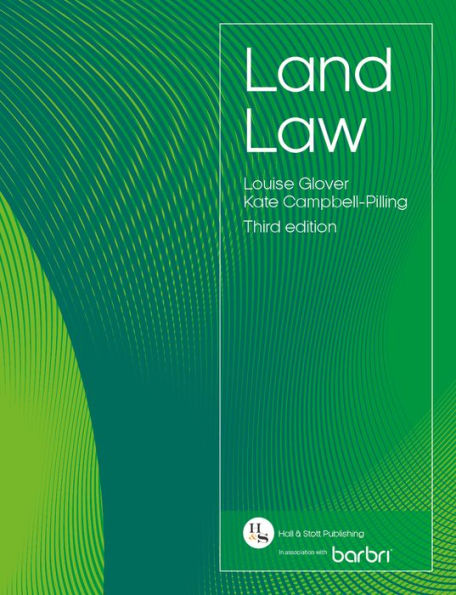Land Law 3rd ed
Land law is of great importance in the commercial and financial sphere, as well as in the domestic life of the nation. But the issues involved and their practical resolution are complex.
Land Law gives the reader a sound knowledge of the current law relating to land. It is suitable for students on GDL and LLB courses and is targeted at those new to studying law and coming to grips with the subject under time pressure. The book aims to provide clarity and focus to guide students through the rules without glossing over the technicalities found in this fascinating area of the law. It provides frameworks to apply to land law problems and considers ‘real world’ issues in contemporary land law.
Features in the book include key case summaries; discussion of the law in practice and reform proposals; examples, diagrams and flowcharts to help understanding; further reading sections; and test your knowledge questions.
1145014276
Land Law gives the reader a sound knowledge of the current law relating to land. It is suitable for students on GDL and LLB courses and is targeted at those new to studying law and coming to grips with the subject under time pressure. The book aims to provide clarity and focus to guide students through the rules without glossing over the technicalities found in this fascinating area of the law. It provides frameworks to apply to land law problems and considers ‘real world’ issues in contemporary land law.
Features in the book include key case summaries; discussion of the law in practice and reform proposals; examples, diagrams and flowcharts to help understanding; further reading sections; and test your knowledge questions.
Land Law 3rd ed
Land law is of great importance in the commercial and financial sphere, as well as in the domestic life of the nation. But the issues involved and their practical resolution are complex.
Land Law gives the reader a sound knowledge of the current law relating to land. It is suitable for students on GDL and LLB courses and is targeted at those new to studying law and coming to grips with the subject under time pressure. The book aims to provide clarity and focus to guide students through the rules without glossing over the technicalities found in this fascinating area of the law. It provides frameworks to apply to land law problems and considers ‘real world’ issues in contemporary land law.
Features in the book include key case summaries; discussion of the law in practice and reform proposals; examples, diagrams and flowcharts to help understanding; further reading sections; and test your knowledge questions.
Land Law gives the reader a sound knowledge of the current law relating to land. It is suitable for students on GDL and LLB courses and is targeted at those new to studying law and coming to grips with the subject under time pressure. The book aims to provide clarity and focus to guide students through the rules without glossing over the technicalities found in this fascinating area of the law. It provides frameworks to apply to land law problems and considers ‘real world’ issues in contemporary land law.
Features in the book include key case summaries; discussion of the law in practice and reform proposals; examples, diagrams and flowcharts to help understanding; further reading sections; and test your knowledge questions.
44.99
In Stock
5
1

Land Law 3rd ed
300
Land Law 3rd ed
300
44.99
In Stock

From the B&N Reads Blog
